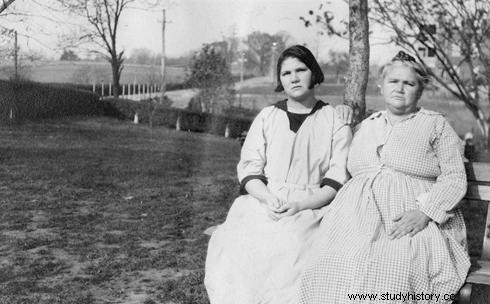Until the 1970s, several countries applied eugenics programs for the improvement of hereditary traits seeking racial hygiene . Although the best known case is that of Nazi Germany, there were many other countries that applied this type of program, such as the case of Sweden that we have already talked about, or that of the USA that we will deal with today.
According to a report on eugenics by the Governor of North Carolina:
The concept of eugenics was created in the late 1800s by British scientist Sir Francis Galton. The mindset at the time was to use the genetic selection used in thoroughbred horses and other breeding animals to create a class of people who had no inferior traits. Indiana became the first state in the nation to pass a eugenics law in 1907.
In all, 33 US states have acknowledged that they carried out sterilization programs during the 20th century. At first they were aimed only at people admitted to mental institutions but, as the years went by, the group of groups that suffered from these programs grew:alcoholics, epileptics, blind or deaf, women considered promiscuous, criminals, those labeled as feeble-minded …And, according to the Victims of Eugenics Foundation:
In the late 1940s, the Department of Public Welfare began promoting sterilization as a solution to poverty…
More than 65,000 people were sterilized in the USA … in most cases without your knowledge . To date, only seven of the 33 states that had sterilization programs have publicly acknowledged this and apologized to the victims. Only North Carolina has taken steps to compensate victims for damages.
The first victim of a sterilization case in Virginia was Carrie Buck in 1924. Carrie lived with her adoptive parents, John and Alice Dobbs , but at the age of 17 her life was cut short... a nephew of the Dobbs raped her and got her pregnant. Given this situation, the Dobbs decided to place Carrie in the Virginia Colony for Epileptics and Feebleminded , an Institution for epileptics and feeble-minded where her mother had already been admitted years before for prostitution. Carrie, a normal 17-year-old girl, was locked up to hide a scandal that would tarnish the Dobbs' family name. She was accused of promiscuous and feeble-minded, and she was sentenced to sterilization.

Carrie and her mother at the Institution
Carrie decided to fight and appealed to the Supreme Court of Justice in the so-called Buck v. Bell case. (John Bell was the accuser as director of the Virginia Colony for Epileptics and Feebleminded.) Bell used the fact that mother and daughter had been admitted to the Institution and that the Buck gene it was lacking. Also, Carrie's attorney, Irving Whitehead, was a personal friend of Aubrey Strode, the legislator who had written Virginia's sterilization law... Carrie was sentenced . In 1927, by eight votes to one, the Supreme Court upheld sterilization. The Court's ruling included justifications such as:
Three generations of morons are enough...
But not everything was left here… Carrie's son was given to his adoptive parents and, in addition, her little sister was also sterilized, although she did not find out until years later because, in theory, she was going to undergo an operation for appendicitis.

Carrie and her first husband
Sources:USA Today, Mercola, Universities
